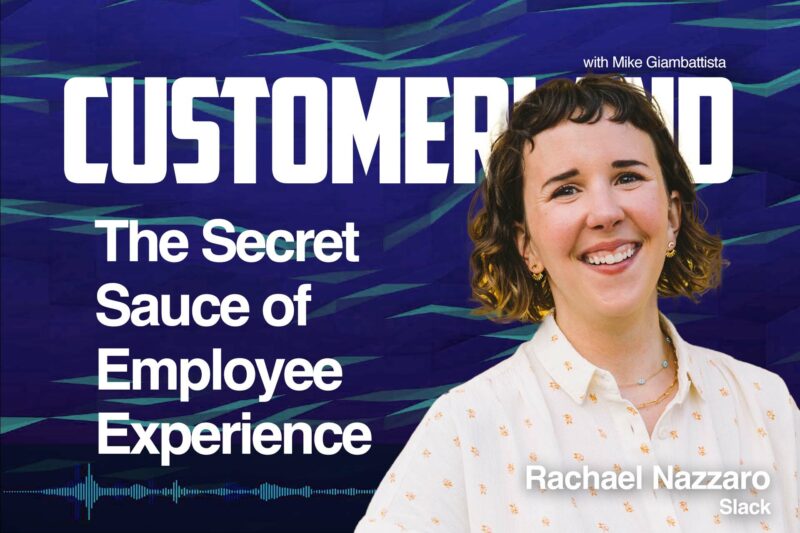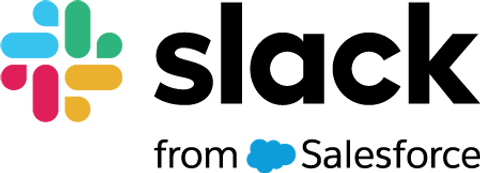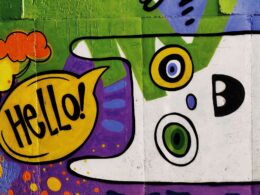Ever wondered how a great employee experience could be used to build deeper connections with your brand? Or perhaps if Slack was designed to be the ultimate tool for improving employee experience? Get ready to quench your curiosity as we examine how these aspects play a crucial role in business success. Quite a stirring dialogue awaits as we explore the fascinating blend of employee satisfaction, customer expectation audits, and the strategic reinforcement of emotional bonds to your brand.
Finally, let’s chat about how Slack and AI are redefining workplace communication and productivity. Rachael Nazzaro, Senior Solutions Engineer at Slack, reveals her first-hand experience with the platform, showcasing the elimination of communication barriers and fostering of genuine connections. Additionally, we tap into the potential of AI in Slack, which has revolutionized information condensation and search capabilities, saving time and increasing efficiency. Don’t miss our riveting wrap-up discussion on change management and how Slack is transforming team communication and collaboration.
Read the full transcript below
Mike Giambattista
Yeah, I mean I love the way you boil it down a moment ago that if you take an approach that is informed, empathetic and direct, you know that’s. That’s change management in a nutshell, right there. So, well said, I’ll credit you when I take credit for that.
Rachael Nazzaro
Appreciate it. Yes, my change management course taught me some good things back in the day.
Mike Giambattista
Not bad Good stuff. I’m here today with Rachel Nazaro, who is a senior solutions engineer at Slack, and, just to be fully transparent, I’ve been hoping for an opportunity to talk to somebody senior at Slack for some time. So Rachel drew the short straw and here we are All that to say thank you, thank you for joining me. I’m really looking forward to this conversation.
Rachael Nazzaro
Me too. Thanks for having me.
Mike Giambattista
For sure. So could you tell us what a senior solutions engineer at Slack does?
Rachael Nazzaro
Yeah, absolutely. A solutions engineer at Slack, whether a senior or not, basically has the wonderful responsibility of sitting down with customers who are either brand new to Slack or considering upscaling their product with us, and I get to listen to their company goals and objectives and what they want to accomplish and I’ll sit down with my team or myself and come up with solutions for how they can accomplish those particular goals within Slack as a product itself.
Mike Giambattista
Okay, I mean I speak with people who have similar titles fairly frequently and it’s hard to tell whether they’re more on the technology and development side, engineering side or on the customer side. It sounds like you kind of sit right in the middle of all those things.
Rachael Nazzaro
I would say I’m a little bit more customer leaning. I wouldn’t say I speak to technical concepts quite often in my role but I don’t build custom things aside from demos. That’s why I can show the customer exactly what it would look like in their seat if they were to implement this idea that I have. But I have to speak to these technical components quite a bit Gotcha.
Mike Giambattista
Can you give us an example of some sort of typical conversation slash solution you might be working on without giving away anything? You shouldn’t, Of course.
Rachael Nazzaro
Yeah of course I mean the most common conversations that I have, just from a very general level.
If it’s for, say, a customer who’s brand new to Slack, it’s really giving them an idea of what the platform looks like and then having a nice conversation with them about where are things getting bottled next right now, what kind of friction points are you running into in your organization and what goals do you have to better increase these things.
And it doesn’t even have to be communication-based, it could be really anything, and from there I will typically sit down with them, come up with a few ideas of things I can, I could suggest, and then I’ll build a demonstration in the actual Slack platform itself, get them on another call and be able to just walk through it in real time and move exactly what it would look like to work through that particular platform. So I think that’s what pretty much any solutions engineer does. It’s just the difference between you know, a regular solutions engineer, a senior, and, depending on which segment you’re in are you supporting small or small? Are you supporting large enterprises? The strategy is a little different, but ultimately we’re just here to help people understand how to get the most out of Slack and really help improve their processes. Cool.
Mike Giambattista
So is it. Would it be fair to say that it’s a kind of a mix between onboarding and just kind of straightforward deeper adoption kinds of things? Or would you say that you kind of work with more new clients than existing clients?
Rachael Nazzaro
I would say I work with existing clients more than I work with new clients, but I prefer working with new clients because it’s so fun to show them the world of Slack. The existing clients are who I work with the most. I would agree with what you said, mike. So onboarding, better adoption and also a lot of security as well. I work with financial services customers right now and a lot of that is all about how to be compliant while you’re communicating, so there’s a lot of that as well.
Mike Giambattista
So I’m just curious, and you’ll have to forgive me if I’m just going too deep into weeds here, but kind of can’t help it. So when you’re in these discussions with clients on the problems they’re facing, are you, are you helping to surface those problems because you’ve got perspective from having dealt with so many other clients? Or does the clients of people come to you and say well, you know, I wish we could X, y or Z, and then you’re kind of you do the head scratch and figure out okay, how can I get you there?
Rachael Nazzaro
Not a vote, oftentimes like it will either proactively reach out based on you know particular metric, or they’ll come in asking a particular question and we’ll, of course, answer that question or surface that initial data point. But usually by talking to the customer more in depth and asking thoughtful questions, we can usually get to a point where we identify other processes that could be improved. Whether that is involved in, like them, changing their subscription or you know them just using parts of the platform that they weren’t aware of, it can really be a variety of anything.
Mike Giambattista
Interesting. I kind of keyed to the notion here that Haley had sent over earlier that you came from the customer experience side. As I mentioned in our conversation, there are a healthy contingent of CX professionals in our audience and you say CX and like a lot of people’s ears perk up. So the fact that you came from CX I’m sure informs what you do on the product side. But yeah, you’re shaking your head. Nobody can see this, but I’m just acknowledging you’re shaking your head.
Rachael Nazzaro
Yes, I am vigorously with a big smile on my face. CX is the most in my heart.
Mike Giambattista
So I’d love to hear a little bit about that, while your perspective, having come from CX, but what that transition was like, because it’s kind of a depending on where you were in CX, it can be a pure solutions mindset or it can be kind of a broader strategy mindset or somewhere in between. So where you were on that spectrum and then how you’ve taken that into your solutions engineering position.
Rachael Nazzaro
I love that. Yeah, I’ve always been in customer-facing roles my entire life, but I’ve been at Slack for five years. Just for context for the audience, I’ve been in customer experience for two and a half three years just about two and a half three years helping customers. So the organization at Slack has broken into specialties and my specialty in CX was to help customers who are brand new to Slack, who didn’t know how to use it and were like, hey, I keep hearing about this product. Like what should I do? You can probably imagine that when I worked in CX in 2020, I had a lot of customers writing and being like we’re all remote.
Now I don’t know how to work anymore. Can you please tell me how to use this product Because we have to figure something out? So that was a real wild time but it’s informed so much. So what I was doing in customer experience was like helping customers who wrote in via email or a ticket, more or less saying like hey, I heard about this product and you explain the basics to me or how I can use it for my problem.
That obviously aligned very well with the solutions engineering, because my role in CX was very customer-facing, very product-facing, and I was able to apply that so much in my role. It’s just I’m working with larger organizations who already have predefined motions for how they’re currently working, so I’m really enhancing those instead of starting from the ground up. But I think so much of the values I learned in CX about like thoughtful, holistic responses to customers that make them feel heard and make them feel like their processes are important and individual and deserving of customized attention, Like these are all things that I was able to really bring into solution engineering and I talked to far less customers that I did in CX. But I think I have a bigger impact in solution engineering just because I’m really able to help them enable these processes.
Mike Giambattista
You know you brought up the pandemic and what happened back then and how the entire universe transitioned in a you know overnight. I’m trying to think of companies. I can’t think of anybody else who might have had such a wild transitional obligation than Slack, because you know, yeah, everybody had to go remote A lot of times. That was just scaling people. But I think in Slack’s case it was almost like how the heck do we even do this for a lot of employees out there? I’d love to hear again, if it’s not you know behind the curtains kinds of topics, but I’d love to hear, since you were there, how did Slack decide to navigate this? How did Slack decide that? You know we’ve got huge potential for success here, but also huge potential for monstrous failure if we can’t meet this demand. So what happened? What were those conversations like?
Rachael Nazzaro
I mean it was wild and I’ve been shaking my head vigorously again in the background while you’ve been saying all of that. I mean, I think the key context here is, I don’t know what happened in my own department and the reaches of my own experience, but I will say one of the things I love most about Slack, aside from the product, is how scrappy and like human focus and empathetic and just personable Slack employees are. Our brand is so like what you see in Slack in our marketing, or like what you hear about Slack. That’s how our culture is. Like we just want to take care of people and we’re very innovative and we just like meet demand.
So in my, in my department and customer experience at the time, we are primarily only like 99% of the time we only offer support via Zendesk. So you know like through support ticketing we do not get on the phone with customers. We have far too many to be able to pick up the phone all the time. So we are very committed to working through email correspondence with our customers.
With that being said, there was a very small subset of customers who, if they wanted help in the form of like a demo to like explain what Slack was. We could maybe set up a few a month, you know, to like sit down with a customer and just give them a one on one, and the pandemic hit. We got a lot more of those requests and I remember our chief of staff at the time leading this initiative to be like, hey, we have this absolutely crazy demand in this really difficult and sensitive environment to help the world keep working right now, and so many people don’t know what Slack is, but they want to know. So how are we going to do this? And in my department we got everyone on my team taking these calls, like we were getting on the phone with customers, and they branched this like little mini program that we had on my team of 15 people out to the entire company.
So, engineers and sales people and people who never talked to customers on their day to day would literally just get on a zoom call with a customer and they’d ask them about Slack and they would just go and explain it to them and explain how they use it Obviously not with like customer basic information at all, but just everybody kind of just jumped in and got on calls with customers and help them.
Obviously that’s not the most scalable solution, but I think when you’re met with like a really intense demand like that, we were able to really scale, I think, pretty effectively. Not necessarily with just that process. I’m sure many more thoughtful things went in behind the scenes that I just didn’t have access to in my day-to-day, but when I talk to people about my career here, like I feel like one of the most pivotal times in my five years here was that year in 2020 when the company just like had to pull it together and figure it out and we just did and we were really, really proud of it and we maintained our culture and we made our customers feel good and it was just it was a really wild time to be working in a company that can let you work remotely.
Mike Giambattista
Right, you know, I mean it was wild.
It’s a great story. I’ve talked I don’t know how many companies that have had to navigate the pandemic one way or another, and it seems like the companies that really did it well were either kind of pre-prepared for this, because, you know, they just serendipitously had stuff aligned that let them kind of keep flowing, or that they were just super scrappy, like, like, doesn’t matter. You know we’re all hands on deck, we’re not going to sleep until this thing’s over and let’s just get it done and both companies out there. But you know, I just don’t know how you. I don’t know how you could plan for something like that, if anybody ever really did. Yeah, you can.
Rachael Nazzaro
And it was really interesting too, because we were always, you know, talking about Slack being a collaboration platform, which it has been since its invention. But the term digital headquarters, in my experience, was really born out of the pandemic, because there was this new need where, like, we need a place where people can keep working but they can’t go to the office, and I feel like that impacted so much of our way to make the general public understand what Slack is and really start making them see it as something outside of, you know, just your basic chat tool. So it really informed a lot of our not marketing but, I guess, marketing and how we talk about the product and explain what the heck is Slack. You know, what does it do?
Sponsor Announcement: What Do Your Customers Expect of You?
What could you achieve if you knew what your customers expected ahead of time? What if you could know what customers expect by category and by brand 12 to 18 months ahead of traditional brand tracking methods? And what if you could know exactly where to adjust and where to spend in order to derive the most benefit every time.
A customer expectation audit allows you to identify areas that require strategic reinforcement, as well as pinpoint which values will contribute most to an emotional bond with your brand and optimize accordingly.
Customerland has partnered with Brand Keys, the world’s oldest loyalty focused consumer research firm, to bring real world customer expectation audits to brands, brand managers and to CX practitioners everywhere Want to know where your brand stands and exactly what to do about it. Go to expectationaudit.com and download a sample audit today.
Mike Giambattista
I was thinking about this in advance of our call here, but I don’t know if you or the internal folks at Slack think about your platform in this way, but there may be a reason to.
Over the past couple of years, the term and the idea of employee experience has become a lot more prominent. It used to be kind of, was the step-sister brother, if you will, to customer experience. That seemed to have a lot less C level traction, therefore budget, therefore real import in the organization. Yet I probably have. I don’t know my conversations now, and granted, there’s just one tiny little corner of the world, but I’ll bet you that one quarter of the conversations I have with CX-ish professionals and companies involve EX on some level. It seems to me that Slack, if you really take a couple of steps back, is the ultimate employee experience tool. I’m just wondering does Slack see themselves as such? If so, how do you have those conversations?
Rachael Nazzaro
I love that question. I love that you said that. I think, if you liken Slack to having a good customer experience, I think it’s like where people are getting together and what are they doing and are they excited about it. I think Slack in the very early days we don’t have it anymore, but we had a woman named Anna who was our voice and tone lady. She got herself. It was like how do we make this product that can be very cold and astute, seen really warm and inviting and a place for people to have a good experience? I think Slack really can be that.
But I do think it’s important to intentionally build that out, because Slack out of the box, before you think about how you want to use it for your organization. It doesn’t have those things prebuilt into it. Of course, it has emojis. Emojis are huge, they’re fun and they are functional. You can do fun colors.
But I think what Slack uniquely creates a place where employees are not only able to be incredibly productive, but if an organization chooses to make the space for it, it can also be a place for people to feel incredibly included. We have employee resource groups. We have announcement channels where the C-suite we have ask me anything, question, and people can go in and ask the C-suite directly why is this change happening? It gives them an ability to respond or do a video clip. Then we have social channels, which, again, I think a lot of people think that technology around work shouldn’t have distractions in it. I agree there has to be a boundary, but I really think when you have employee resource groups and you have community-based channels, whether they’re social or something else, people have an ability to be themselves, their authentic selves at work and talk to people that they normally wouldn’t talk to you because they’re commenting on their co-worker’s really cute dog picture or they’re asking for tips on their favorite video game.
You know what I mean. I don’t want to say that Slack is a tool where all you do is socialize all day. It’s definitely not the case. Having these areas, especially in a company who may be primarily remote, allows you to foster a lot of connections between people you would never necessarily talk to. Oh, like I’m not even my head vigorously to here, so I.
Got asked this for another article. I was talking to you and I love talking about this story. So we’re talking about like employee satisfaction and feeling belonging and like maybe you work in a remote Organization, you feel like you don’t have as much room for advancement because people aren’t seeing you at your desk every day, they’re not seeing what kind of questions you’re asking or what kind of work you’re outputting and how slack can help remedy that. I’ve met so many cool people at slack, community-based channels. Example well, my first couple years at slack there was an animal crossing channel like the Nintendo video game and are now VP of product Used to host people like her like no way could go and visit her animal crossing island and she would like set it all up so people could come and get gifts and you could like Talk to her and it just like really levels the playing field for people to like make these connections with people that you don’t have to feel so awkward about, and it’s like oh yeah, I can go talk to Ali or I could go talk to Kristen, who are these very high up people at my organization and they’re humans.
They’re not, you know, c-suite executive so I’m too scared to talk to. They’re just people who I can have something in common with, and then when I have something work related, I already have that relationship belt right so it.
It fosters a lot of really natural networking and Also your ability just to get worked on like I love it. I think slack is a really vibrant product and I think it really does help a lot with employee engagement and like satisfaction because it fosters such an authentic platform for people to do things they like and meet people with similar minds.
Mike Giambattista
I don’t know if this is an answerable question, I don’t even know if it’s actually a real question, but I’m curious to know whether slack in its original Inception was really intended to design to foster those kinds of that kind of familiarity, rather than just, you know, it’s just a great, efficient communications channel because you know layering in human emotion and all of our you know societal I’m just going to say- psychology into that. First of all, it’s it’s a huge undertaking to understand it and make sure you don’t blow it. But you know, what you’ve, what you’ve built as a result of that, really does Foster that kind of inclusivity, inclusion, belonging and Ability to talk to people like we’re just doing right now. Yeah, totally.
Honestly, it wasn’t going to be a real question.
Rachael Nazzaro
I’m sorry, but no, I know it’s interesting because, like I think, like I wasn’t there, obviously, when the founders of slack were trying. I know, in Haley, you might have to like like correct me on this by wrong, but my understanding is from, like my onboarding days, is that Slack was created because Stuart and Cal and some of the other founders were making a video game and they needed a place to organize. So they created slack as a way to like help them organize their project of creating a video game and it really I think it came out of a desire to be very organized and have organized Conversation type folders or just topic-based areas. But I also think that the founders of slack and anyone who’s Subsequently come, especially on a C-suite level, have so Much gumption I don’t know other word to use. But I think that the people at this company have really infused slack with that and they’ve made sure that that Vibrancy and that gumption really feeds into the product and I think they’ve done a really good job keeping it that way and it’s become that.
Mike Giambattista
Pretty fascinating. Um, I want to shift a hair here.
Yeah, I’ll talk about, about the kinds of things you see from your perspective working at a company like Slack. Let me just put it out there as a as kind of a wish list. You know you use to talk to a lot of people about a lot of their problems and how slack can solve them, but let’s just say that the audience for customer land was a gable billion people who all uh, lived in the appropriate, worked in the appropriate spaces where you could impact them. What would you want to say to them about? I say this to a million people all day long, but if I could say it once and you could get it All the better and yes, I realize I put you on the spot- Like, what would I say to a billion people right now if I could tell them anything about Slack specifically?
Or their own ability to communicate with each other or get stuff done, or the kinds of problems you solve for oh, wow, that’s a broad question.
Rachael Nazzaro
Okay, if a billion is too intimidating.
Mike Giambattista
Let’s go with a million, because that’s you know who speaks to a billion people.
Rachael Nazzaro
It’s still just as broad. The impact is the same. I mean, I don’t know like I think the reason and I’m probably going to skip all a little bit here but I think the reason I love Slack so much is because it’s such a vibrant platform that allows people to come up and be there authentic selves, like. I’ve worked in a lot of platform or companies in my life before Slack were from like very traditional industries email, excel, spreadsheets and that doesn’t translate to like not being happy at work. Like that’s not you know, like that’s not true. Like if people use these tools all the time and they’re doing great, I think moving to a company, you know, like Slack and the communication and the platform I think it just really creates.
There’s so much value in being able to show up and work in an authentic way and maybe this is just my experience as a Slack employee, but also an experience of using the product. But I think when you foster environments for people to be able to communicate as they are and remove the barriers that make communication so difficult, I really think people would be surprised by how much their lives can change Like I mean, they’re working lives at least. Like my life is so much easier and so much more enjoyable and I’m realizing that’s literally Slack mantra and I’m not, I didn’t do that on purpose. Like our whole thing is like make work more simple, pleasant and productive. But when you have those experiences at work and you have a platform that instills those values like it just translates so much to your productivity and your success as a company and the satisfaction of your employees. And if your employees are happy, you’re probably giving great service to your customers. And I don’t know. I just really love Slack. I’ve been here five years and I still can’t shut up.
Mike Giambattista
Well, if your HR department gets inundated by job applications who came from the customer? You’ll know why. Because it’s infectious. You’re enthusiastic.
Rachael Nazzaro
I don’t know if I did a very good job answering that, but I did my best you did.
Mike Giambattista
There’s a million people out there that are now enlightened so good. So I have to. I have to say that I’m not familiar enough with Slack to know how you are using AI. I know that you are, because everybody is. The rules are embedded in there, but are you able to speak to how Slack is? Is deploying AI right now, or your plans to do so in the future? What that might look like?
Rachael Nazzaro
Yeah, I can talk about some high level things. They have not been released yet, but we’re definitely talking about them with customers right now. They’re going to be pretty specific to Slack at this time and this is kind of like v1 version one of what’s coming out with AI, but I think it’s going to be pretty cool. So this may be specific Slack. So if you don’t use Slack, this won’t make much sense.
Mike Giambattista
So the solution there is to use Slack. It’ll be appropriate.
Rachael Nazzaro
So you’re going to use Slack, and then you’ll know what I’m talking about Exactly.
There you go. So in Slack, like this for a little context, for maybe people who don’t know what Slack is Slack is going to be like your channel based communication, so instead of sending an email to one person, you’re communicating with your team and a channel, and that channel is searchable by everyone at your company so you can find answers very easily. It becomes a place that stores a lot of information, which is absolutely incredible because, instead of having to send an email, someone say hey, who do I reach out to to ask this question to you? Or hey, what’s the answer to this question? And then sitting around for an hour waiting for someone to get back to you, you can instead search that log of all of that knowledge and information and find the answer for yourself. And there you go. You just saved an hour of something that you could have been doing otherwise. So that really speeds up that process. That’s just one of the benefits of Slack. Now, if you can imagine, if you use Slack for a year, five years well, I can’t say 10 years, because Slack hasn’t been around for 10 years yet. I don’t think we’ve had 10 years yet.
Ai comes into play by being able to summarize that information for you. So say, you have a channel for one of your customers and it’s a customer that you want to support extra. Well, let’s talk by club service. You’re out for two weeks on your vacation. You come back. People have been talking like crazy in that channel. There’s been lots of updates and lots of things happening. Instead of having to go back and read every single thing, you can have AI say hey, summarize what happened while I was on a vacation, and AI will go through your channels and give you the information, summarize what’s going on there. So you can save a lot of time there with summarization.
And then number two is search. The search is huge to Slack. Slack stands for searchable log of all communications and knowledge, and search right now is great because you can go in and you say where do I get my W2? And you’ll see. You’ll get results of people who have asked similar questions and how they were ultimately responded to. But you still have to kind of go through that list and find the answer.
With AI, you can type in hey, where do I find my W2? Question mark and AI answers the question for you, so you don’t have to scroll through and try and find it. It is literally answered to you based on the information that your team has consistently put into the platform. It’s secured only to your environments You’re not getting information from like Google or other companies but that really dramatically speeds up how fast you can get information. If we’re talking about a CX world, talk about like a CE agent who got at the complex question they don’t know how to answer.
Instead of spending 30 minutes going through Slack trying to tease things together based on what other people have solved, you can just go in and ask your customer’s question to Slack’s AI and Slack AI is going to answer that question for you in a minute or two, maybe less. With resources, with quotes, no-transcript. What am I thinking of? Like citations for where this information has come from so you can validate it, and then your customer gets that answer so much faster. So that’s like the three things that are coming with AI, with Slack, but there will obviously be more as we continue building into and investing in AI more.
Mike Giambattista
Very, very cool. How far away do you think those are from being live to the public?
Rachael Nazzaro
AI for Slack is going to be soon, next year. In Monday I say next year, maybe 2024. Sure, but advancements. Yeah, we’re actively talking to our customers about it, so it’s coming.
Mike Giambattista
Exciting. Aside from the internal, I would just say agile culture over there externally, as you talk to your clients and others, not everybody is that agile. Not everybody is able to adapt to the changes and adopt the technologies that facilitate them as quickly. So there are adoption hurdles that can be anywhere from. Our tech stack needs to be adjusted so we can support X, y and Z. Or culturally we’ve got silos and barriers and people are incentivized to do stuff that kind of we haven’t quite figured out yet. I mean you can see all of those hurdles kind of show up From your perspective. Where would you say most of the hurdles are to adoption of these kinds of next-gen technologies, specifically Slack or others. And then how do you help companies navigate that?
Rachael Nazzaro
The biggest hurdle that I see is people who are nervous to use a technology that they have deemed as too modern, maybe more traditional workforce using their entire life. Like saying you’re going to use Slack is a really hard thing for people to follow when they’re used to doing things the way that they’ve been doing them their entire careers. That’s what I see by far the most Like we’re talking about one of the hardest hurdles to get over, and I really don’t think it’s that hard to get over. I think it just takes a lot of empathy and some solid change management processes. Change management is hard and I think you really have to approach it with informed, empathetic and direct communication. You can’t just be like yo, we’re using this, now get over it, it doesn’t work. So what? I talk to customers who tell me that they have really resistant employees who are not going to use this. I’m like okay, well, let’s not just like turn on a switch and force them to do it, but let’s be direct and let’s approach this so like the things I typically tell customers to do is like find a handful of people at your organization who are stoked to use this, whether it’s Slack or anything else Like there are people who are excited about it and who can speak about it. These are people who should be your touch points. These are people who can lead initiatives, these are people who can be contact cards for people to reach out to for questions, and these are people who are going to help foster a change here. I think that’s so essential.
The other thing is like a phased approach I mean in Slack in particular like maybe you don’t have to go and roll out Slack to your entire company. Maybe start with your engineers and your dev folks and maybe sales or something like that People who are more open to it and who could get the most immediate impact and start in departments and roll it out in phases. And I think that really kind of helps too, because then you can build a momentum up. You could start at a smaller scale and then figure out what’s going wrong, what’s going right and make those changes. Slack is so flexible. There’s nothing that’s like inherently wrong with the product. If you don’t like how something is working, then you can change it and you can change the process to be something better. Which I think leads me to my next point that feedback is so, so important and that’s I think that’s important in any change management.
Revision is like not forcing things on people’s throats, but like doing a phased approach and saying, hey, we’re building feedback, we’re starting this Now, we’re going to do it for a month and have resources, have places for people to give feedback about their experience so you can listen to it and change things to make sure that people are being met the way that they want to be met and that typically helps a lot. And then just resources and the way people want to see them. Make videos, make written resources, have those champions you know be around to help answer people’s questions. Those are usually the things that I recommend and when people are thoughtful just a little bit when they start this out, it’s really not that big of a deal.
Like, I think people especially since we got purchased by sales force, I think people like and slack a lot to having a very, very robust implementation process. You really have to hire someone to get slack off the grounds? Definitely not the case. It’s like you really just need a thoughtful foundation and it will grow from the C-2 plan because people will know how to use it correctly. It really takes off and it doesn’t take too much implementation, in my opinion of a person helping people do this for you know, five years.
Mike Giambattista
Five years. Yeah, I mean, I love the way you boiled it down a moment ago that if you take an approach that is informed, empathetic and direct, you know that’s change management in a nutshell, right there. So, well said, I’ll credit you when I take credit for that.
Rachael Nazzaro
Appreciate it. Yes, my change management course taught me some good things back in the day.
Mike Giambattista
Not bad Good stuff.
Rachael Nazzaro
Yeah, great.
Mike Giambattista
Well, as I mentioned when we started this conversation, there are probably another dozen dog legs that we could take, but I feel like probably those are best left for the next edition here. So, unless there’s other things that you think we need to talk about in this conversation, I think this is a. This has been great. I think it’s super informative, a lot of fun. I think people are going to be a lot more better informed about what Slack is and what you guys do there. And and yeah, what else do we need to talk about other than getting back together again?
Rachael Nazzaro
We can totally get back together again. I agree, this has been super fun, thank you.













